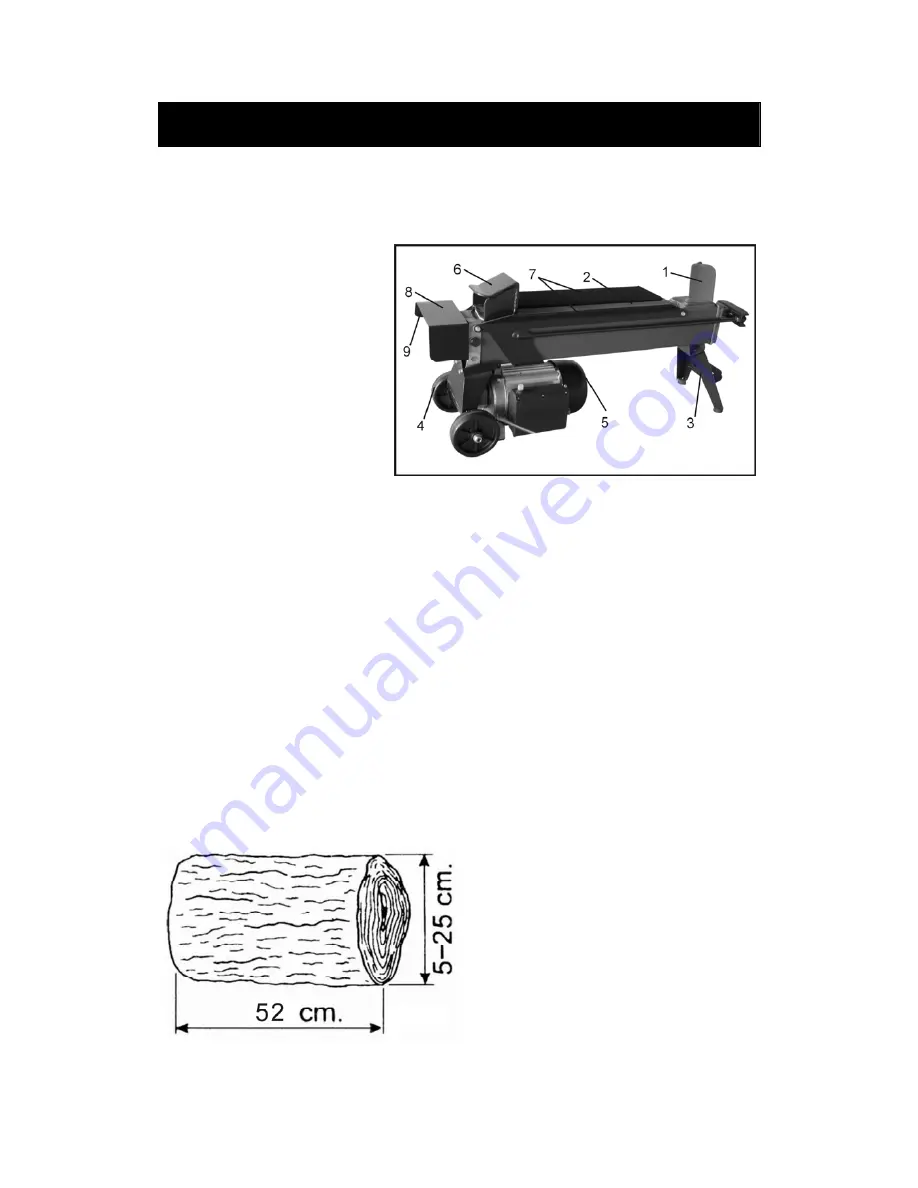
10
FEATURES
1. Before attempting to use, familiarize yourself with all the operating features and safety
requirements of your log splitter.
1. Wedge
2. Oil tank
3. Supporting leg
4. Rolling wheel
5. Motor w/push switch
& circuit breaker
6. Log pusher
7. Log retention brackets
8. ZHB hydraulic
control lever
9. Safety guard for
hydraulic control lever
2. Size of the logs to be split
The figure 1 shows the maximum log sizes
that can be split.
The diameter of the log is indicative: a small
log can be difficult to split if it has knots or a
particularly tough fiber. On the other hand, if
the wood has regular fibers it is not difficult to
split logs with diameter greater than the
maximum shown in fig. 1.
It is important not
to insist when the log does not split on the
first attempt, as the pump may be damaged
by the overheating of the oil when the
machine is made to work under the
maximum stress in the attempt to split
excessively hard wood.
3. Recommended
oils
We recommend use of the following oils for
the hydraulic cylinder.
SHELL TELLUS T22
ARAL VITAM GF22
SP ENERGOL HCP22
MOBILE DTE 11 OR equivalent
DO NOT USE OTHER GRADE OILS
4. Application
conditions
This log splitter is a home use model. It is
designed for operating under ambient
temperature b5
0
C and 40
0
C and for
installation at altitudes no more than 1000mm
above M.S.L. The surrounding humidity
should less than 50% at 40
0
C. It can be stored
or transported under ambient temperatures
between -25
0
C and 55
0
C.
Max altitude: 1000m.
































